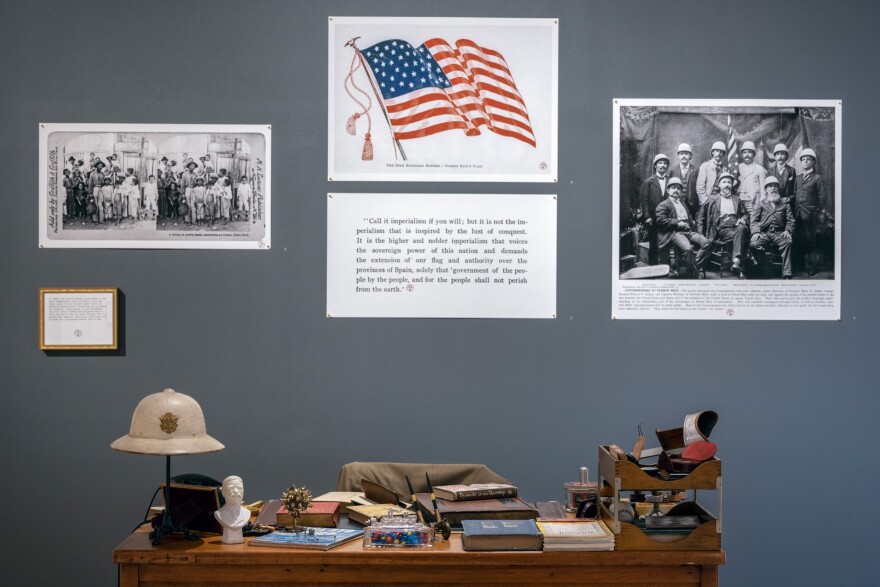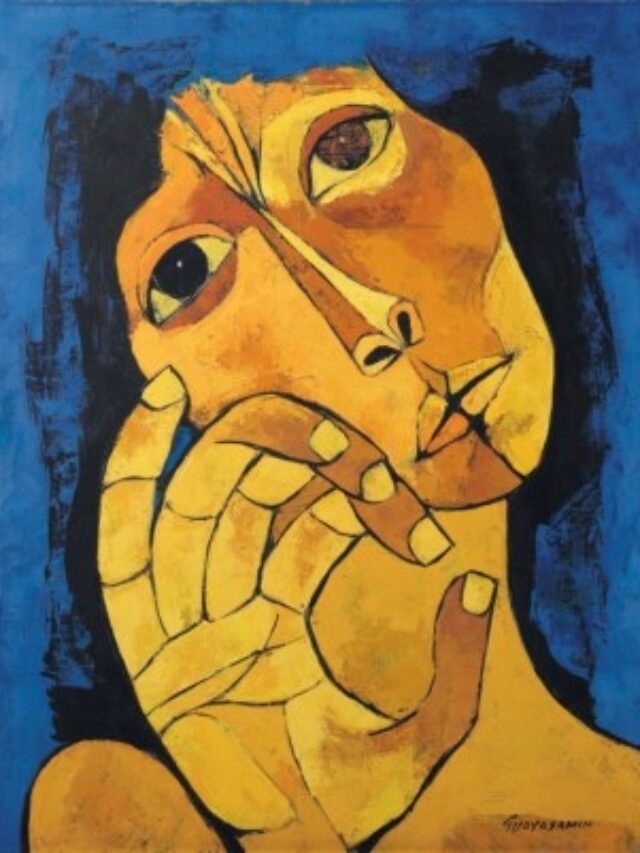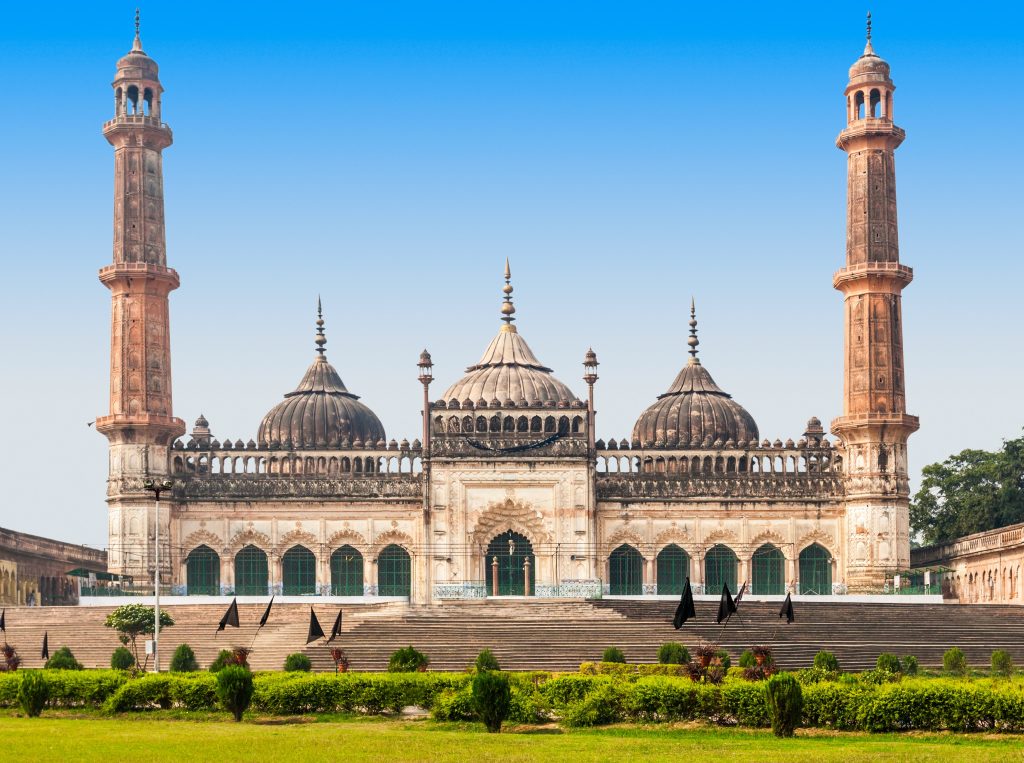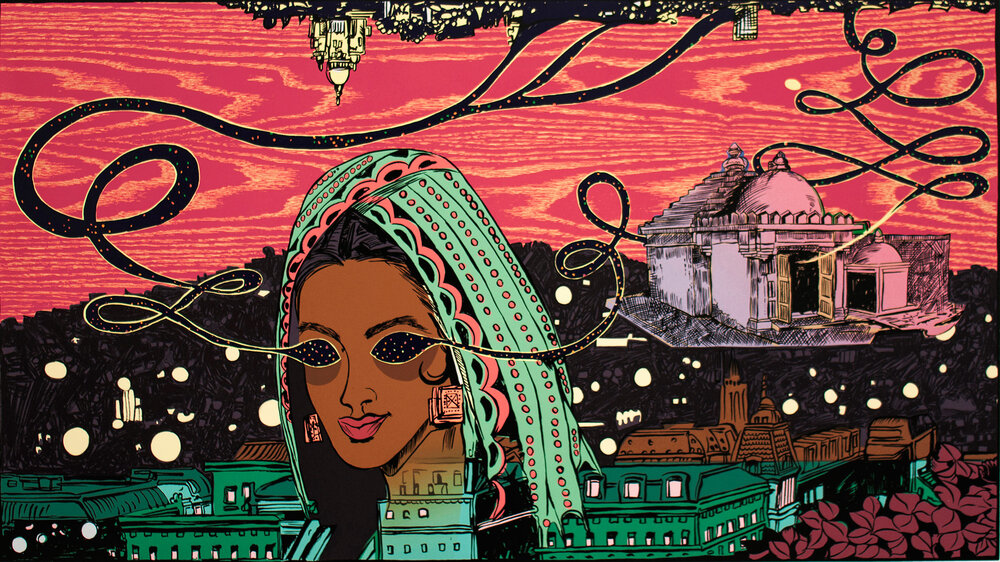The Venice Biennale 2024 stands as a beacon for artistic innovation and cultural dialogue, showcasing groundbreaking works from around the globe. This year, the U.S. pavilion features an extraordinary collection of artists whose works poignantly address themes of Native American history and colonial exploitation.
This special presentation brings together the powerful and evocative creations of Pablo Delano, Oswaldo Guayasamín, Alfredo Ramos Martínez, and Kay WalkingStick. Through their distinct artistic languages, these artists explore the enduring impacts of colonialism and the rich cultural legacies of Indigenous communities, offering viewers a profound reflection on historical memory, identity, and resilience. This article delves into their remarkable contributions, highlighting how their works challenge, inform and inspire a reexamination of America’s complex past and present.
Pablo Delano

San Juan-born artist and photographer Pablo Delano, currently residing in West Hartford, United States, brings a profound exploration of colonial histories to the international stage with his latest archival-based conceptual installation, The Museum of the Old Colony (2024). Known for his meticulous engagement with archives and his deep commitment to documenting the lives, histories, and struggles of Latin American and Caribbean communities, Delano’s work serves as a critical lens through which the enduring impacts of colonialism are scrutinized.
The Museum of the Old Colony meticulously examines the complex and enduring colonial structures that have shaped Puerto Rico’s socio-political landscape. Puerto Rico, a Caribbean island, has been subjected to over five centuries of colonial rule, beginning with Christopher Columbus’s arrival in 1493, which initiated an era of Spanish domination. The island’s fate shifted in 1898, following the Spanish-American War when the United States annexed Puerto Rico as an unincorporated territory. This transition did not alleviate the island’s subjugation but introduced new political and economic challenges. Delano’s installation delves into the adverse effects of this prolonged colonial status, highlighting issues such as capitalist exploitation, racial hierarchies, and the paradox of a form of citizenship that denies Puerto Ricans the right to vote in US presidential elections. The artist’s work underscores how these colonial legacies continue to influence contemporary Puerto Rican society, politics, and identity. The installation’s title, The Museum of the Old Colony, is ironic. It simultaneously critiques the role of traditional museums in perpetuating colonial narratives and references a famous US soft drink brand in Puerto Rico. This dual reference underscores the pervasive influence of US culture and consumerism on the island, serving as a metaphor for the broader mechanisms of colonial exploitation.
Delano’s work illustrates the multifaceted ways US colonial power manifests, from the commodification of goods to the intricate socio-cultural exchanges that sustain a colonial matrix. Delano highlights the involvement of anthropologists, missionaries, photographers, and politicians, highlighting the complex web of agents who have historically contributed to and perpetuated colonial ideologies and practices. The installation is a comprehensive assemblage of objects, photographs, newspapers, films, and magazines sourced from various archives. These elements collectively narrate the intertwined histories of Spanish and US dominion over Puerto Rico, vividly portraying the island’s indigenous and native communities and people of African descent. Through this intricately woven tapestry, Delano paints a poignant picture of Puerto Rico’s troubled past and ongoing struggles under colonial rule.
By presenting these historical narratives, Delano invites viewers to engage with the complexities of colonialism and its lasting impacts on contemporary society. The installation does not merely recount historical events; it also critically examines the narratives constructed around these events and their implications for the present and future. This presentation at Biennale Arte 2024 marks the first time Pablo Delano’s work is featured at this prestigious international exhibition. The inclusion of The Museum of the Old Colony at Biennale Arte not only signifies a moment of recognition for Delano’s artistic contributions but also brings much-needed attention to the ongoing colonial struggles faced by Puerto Rico. Delano’s participation in Biennale Arte provides an invaluable platform for amplifying the voices and experiences of those marginalized by colonial histories. It also underscores the importance of art as a medium for social critique and historical reflection.
Oswaldo Guayasamín
Oswaldo Guayasamín, born in Quito, Ecuador, in 1919 and passed away in Baltimore, United States, in 1999, was a pioneering painter and a fervent political activist. Renowned for his expressionistic portrayals of the suffering and resilience of Indigenous populations, Guayasamín’s work earned him significant acclaim throughout the mid-to late-twentieth century. His inclusion in Biennale Arte 2024 marks the first time his profound and evocative artworks are showcased at this esteemed international art exhibition, offering a new audience the opportunity to engage with his powerful visual narratives.
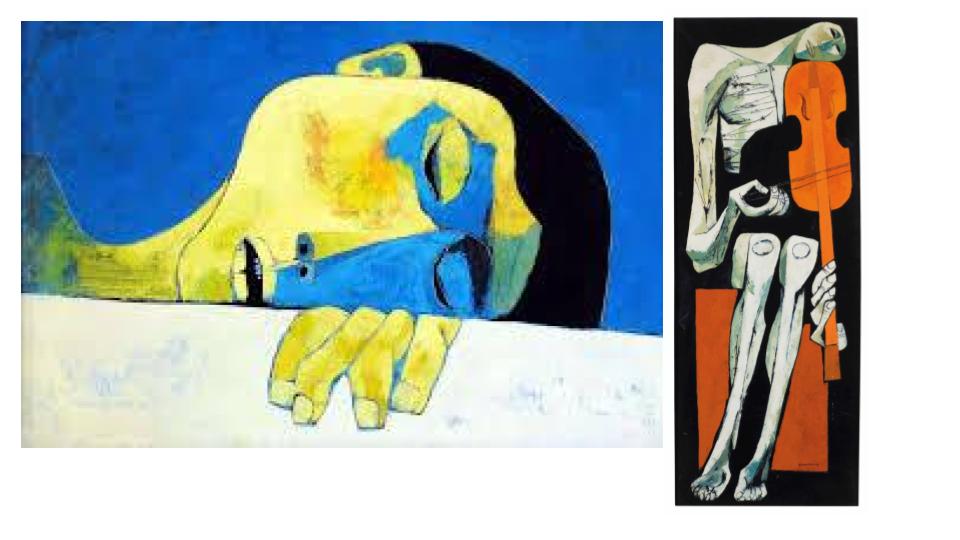
One of Guayasamín’s most striking pieces, Cabeza de Hombre Llorando (1957), is a testament to his unique brand of Expressionism. This painting features a man with angular forms and elongated features, weeping in a display of profound sorrow and endurance. The paint near the figure’s eyes is notably cracking, infusing the work with a palpable sense of fatigue and weathering. This meticulous detail not only enhances the emotional depth of the piece but also suggests the passage of time and the enduring nature of the subject’s suffering. The flattened perspective of the painting further amplifies a sense of entrapment and anxiety, creating a powerful visual metaphor for the oppression faced by many Indigenous cultures. Guayasamín’s use of earthy tones—greys, browns, blacks, and reds—evokes natural pigments and draws a direct connection to precontact visual cultures. These colours ground the piece in a rich cultural context, reinforcing the artist’s commitment to portraying Indigenous peoples’ authentic experiences and histories. Despite the evident anguish of the weeping man, there is a remarkable sense of defiance in his gaze. The figure looks back at the viewer with an unyielding dignity, challenging them to witness and acknowledge his suffering. This interplay of despair and resilience is a hallmark of Guayasamín’s work, reflecting his deep empathy for the downtrodden and his relentless pursuit of social justice through art.
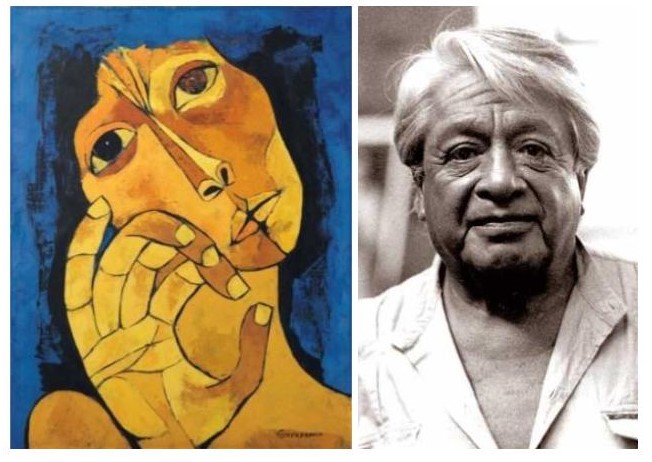
While many European Expressionists employed colour and form to explore the anxieties of an increasingly industrialized society, Guayasamín’s Expressionism took on a distinctly political dimension. He used the same artistic tools—distorted forms, bold colours, and evocative compositions—to protest the systemic oppression and violence faced by Indigenous populations in Latin America. His work transcends mere aesthetic exploration, becoming a powerful social commentary and activism form. Guayasamín’s paintings are imbued with a profound sense of urgency and moral responsibility. They serve as artistic expressions and calls to action, urging viewers to confront and address the injustices depicted. His art is a testament to the power of visual media to effect social change and to give voice to the marginalized and oppressed.
Including Oswaldo Guayasamín’s work at Biennale Arte 2024 is a momentous occasion, marking the first time his evocative and politically charged artworks are presented at this prestigious event. This recognition not only honours Guayasamín’s significant contributions to the art world but also underscores the continuing relevance of his themes in contemporary society. As the international art community gathers at Biennale Arte, Guayasamín’s work offers a poignant reminder of the enduring struggles Indigenous populations face and the vital role of art in advocating for social justice. His paintings, with their profound emotional depth and unflinching portrayal of human suffering, resonate across cultures and periods, inviting viewers to engage with the critical issues of oppression and resilience.
Alfredo Ramos Martínez
Alfredo Ramos Martínez, often hailed as the “father of modern Mexican art,” was born in Monterrey, Mexico, in 1871 and passed away in Los Angeles, USA, in 1946. A prolific painter, muralist, and educator, Ramos Martínez played a pivotal role in the evolution of Mexican modernism, particularly during the tumultuous period of the Mexican Revolution (1910-1920). His innovative approach to art and education redefined the Mexican artistic landscape, and his work continues to resonate with themes of cultural identity and nationalism. The Biennale Arte 2024 marks a significant milestone as it showcases Ramos Martínez’s work for the first time, introducing his profound contributions to a global audience.
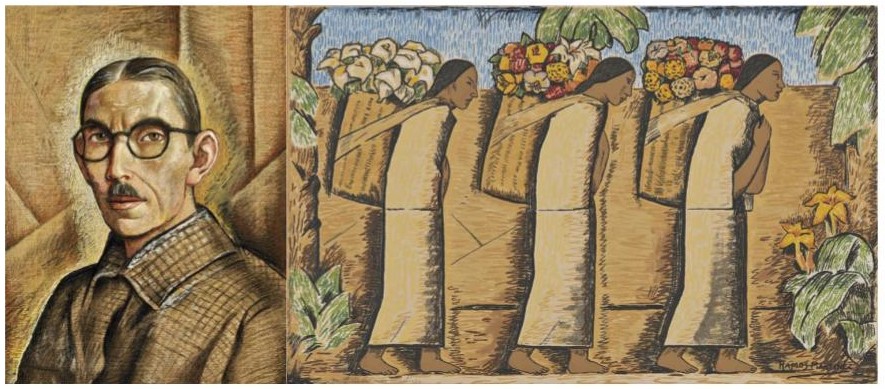
Among Ramos Martínez’s most notable works is Mancacoyota (1930), a portrait that encapsulates the artist’s reverence for Indigenous culture and his vision of a new Mexican identity. The painting depicts a proud Indigenous woman whose noble demeanour emanates from her deep-rooted heritage. With a curious gaze, she stands against the backdrop of a monumental cactus wall, embodying a blend of serenity, reluctance, and suspicion. This portrait is not merely a representation of an individual; it is a powerful statement on the significance of Indigenous heritage within the fabric of Mexican national identity. With its towering cacti, the setting symbolizes Indigenous culture’s resilience and enduring spirit. The woman’s expression invites viewers to engage with her narrative, reflecting quiet strength and dignity.
Ramos Martínez’s artistic techniques in Mancacoyota reveal a profound admiration for native traditions while simultaneously forging a new path for Mexican art. The use of earthy tones and delicate strokes to render the woman’s face contrasts with the vibrant red blossoms in the background, a nod to Mexican Impressionism. These elements collectively evoke a sense of harmony between the individual and the natural world, highlighting the interconnectedness of cultural identity and the environment. The red blossoms are particularly significant, representing Mexican culture’s beauty and resilience. This fusion of Impressionistic techniques with traditional motifs underscores Ramos Martínez’s innovative approach to art, blending European influences with a distinctly Mexican perspective. This synthesis symbolises a broader movement within Mexican modernism, which sought to create a unique national identity through the arts.
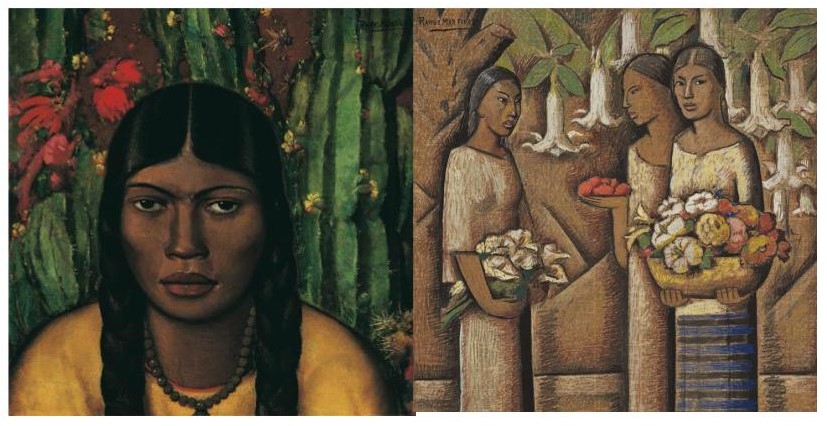 Ramos Martínez’s impact extends beyond his artworks; he was a transformative figure in art education. During the crisis of the Mexican Revolution, he reconfigured art schools to reflect the changing social and political landscape. His efforts democratized art education, making it more accessible and inclusive of Indigenous traditions and contemporary Mexican life. In 1929, Ramos Martínez moved to Los Angeles, where he continued to produce significant works and influence the artistic community. Mancacoyota, likely created during this period, reflects his ongoing commitment to celebrating Indigenous culture and his ability to adapt and thrive in a new environment while maintaining a solid connection to his roots.
Ramos Martínez’s impact extends beyond his artworks; he was a transformative figure in art education. During the crisis of the Mexican Revolution, he reconfigured art schools to reflect the changing social and political landscape. His efforts democratized art education, making it more accessible and inclusive of Indigenous traditions and contemporary Mexican life. In 1929, Ramos Martínez moved to Los Angeles, where he continued to produce significant works and influence the artistic community. Mancacoyota, likely created during this period, reflects his ongoing commitment to celebrating Indigenous culture and his ability to adapt and thrive in a new environment while maintaining a solid connection to his roots.
The presentation of Alfredo Ramos Martínez’s work at Biennale Arte 2024 is a momentous occasion that celebrates his enduring legacy. It offers a unique opportunity for the international art community to engage with the profound themes of cultural identity, nationalism, and resilience that permeate his work. Ramos Martínez’s art captures the essence of Mexican modernism and speaks to universal themes of heritage, identity, and the human spirit. As Biennale Arte 2024 showcases Mancacoyota and other works by Ramos Martínez, it honours a visionary artist whose contributions have shaped the course of modern Mexican art. His portrayal of Indigenous femininity, national identity, and cultural pride continues to inspire and resonate, highlighting the timeless relevance of his artistic vision.
Kay WalkingStick
Kay WalkingStick, born in Syracuse, USA, 1935, has spent over six decades crafting paintings and sculptures that poignantly address America’s complex history. With a mother of Scottish-Irish descent and a Cherokee father, WalkingStick’s work navigates the intersections of her mixed heritage and the broader narrative of Indigenous presence in America. Biennale Arte 2024 proudly marks the first presentation of her evocative works, highlighting her crucial role in reinscribing Indigenous histories into the American cultural landscape.
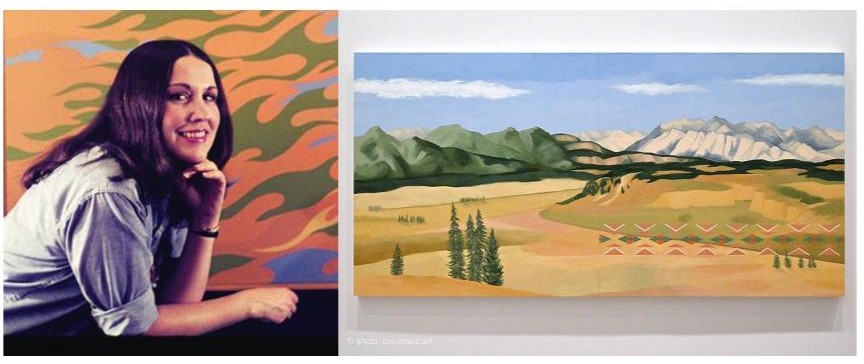
WalkingStick’s works, such as The Silence of the Glacier (2013), South Rim (2016), Galena Pass (2023), and Salmon River Valley (2023), are deeply rooted in her memories and sketches of iconic American landscapes. These awe-inspiring views of the Grand Canyon, Glacier National Park, and Sun Valley are well-known as recreation and tourism sites. However, WalkingStick reveals a deeper narrative, emphasizing that these lands are also ancestral homes to Native communities who were forcibly displaced and resettled into reservations. In her art, WalkingStick overlays Indigenous motifs and symbols onto these landscapes, effectively recovering and honouring the historical memory of their original custodians. This approach not only brings visibility to Indigenous histories but also challenges viewers to recognize the ongoing presence and resilience of Native communities.
In The Silence of the Glacier, WalkingStick captures the majestic and serene beauty of Glacier National Park. The artwork juxtaposes the glacier’s tranquil, icy blues and whites with warm, earthy tones representing the land’s ancestral significance. By integrating motifs specific to the Native tribes of the region, she underscores the deep connection between the natural environment and Indigenous cultures. The painting speaks to the silenced histories of these lands, inviting contemplation on the interplay between nature’s grandeur and the narratives that have been erased.

South Rim offers a panoramic view of the Grand Canyon, blending WalkingStick’s keen observation of the landscape with symbolic elements referencing the Hopi and Navajo tribes. The canyon’s rugged beauty is depicted with intricate detail. At the same time, the overlaid motifs serve as a testament to the enduring legacy of the Indigenous peoples who have lived there for centuries. This artwork challenges the viewer to see beyond the surface beauty and acknowledge the rich cultural heritage intertwined with the landscape. In her recent works, Galena Pass and Salmon River Valley, WalkingStick continues her exploration of place and memory. These paintings draw from her experiences in Sun Valley, depicting the region’s breathtaking vistas with a blend of realism and abstraction. Incorporating Native patterns and designs enhances the visual impact and serves as a reclamation of space, asserting Indigenous peoples’ historical and ongoing presence in these lands.
WalkingStick’s art is profoundly informed by her journey as a member of the Cherokee Nation of Oklahoma and her mixed heritage. Her works reflect a nuanced understanding of belonging and identity, grappling with the complexities of navigating two cultural worlds. This dual perspective enriches her art, infusing it with a unique sensitivity to the themes of displacement, resilience, and coexistence. Through her art, WalkingStick invites viewers to confront the collision of histories and imagine new ways of acknowledging and integrating Indigenous presence into the broader American narrative. Her works challenge us to rethink our understanding of these iconic landscapes, encouraging a deeper appreciation of their cultural and historical significance.
The inclusion of Kay WalkingStick’s work at Biennale Arte 2024 is a historic and significant moment. It highlights her contributions to contemporary art and her efforts to reclaim Indigenous histories. As the international art community gathers to celebrate creativity and innovation, WalkingStick’s work stands out for its profound engagement with themes of identity, memory, and cultural reclamation. WalkingStick’s art not only captivates viewers with its visual beauty but also compels them to engage with the underlying narratives of displacement and resilience. By reinscribing Indigenous presence into these landscapes, she offers a powerful commentary on the enduring impact of colonization and the strength of Native communities.
Kay WalkingStick’s work at Biennale Arte 2024 is a powerful reminder of recognizing and honouring Indigenous histories. Through her evocative paintings and sculptures, WalkingStick reclaims spaces that have been culturally and historically significant to Native peoples. Her art invites us to confront the complexities of America’s past and envision a future where these histories coexist and are celebrated. As Biennale Arte 2024 celebrates her work, it underscores art’s enduring relevance and transformative power in addressing historical injustices and fostering cultural understanding.

Jain Syriac Babu is a Kerala-born, Italy-based theatre artist and art enthusiast.

